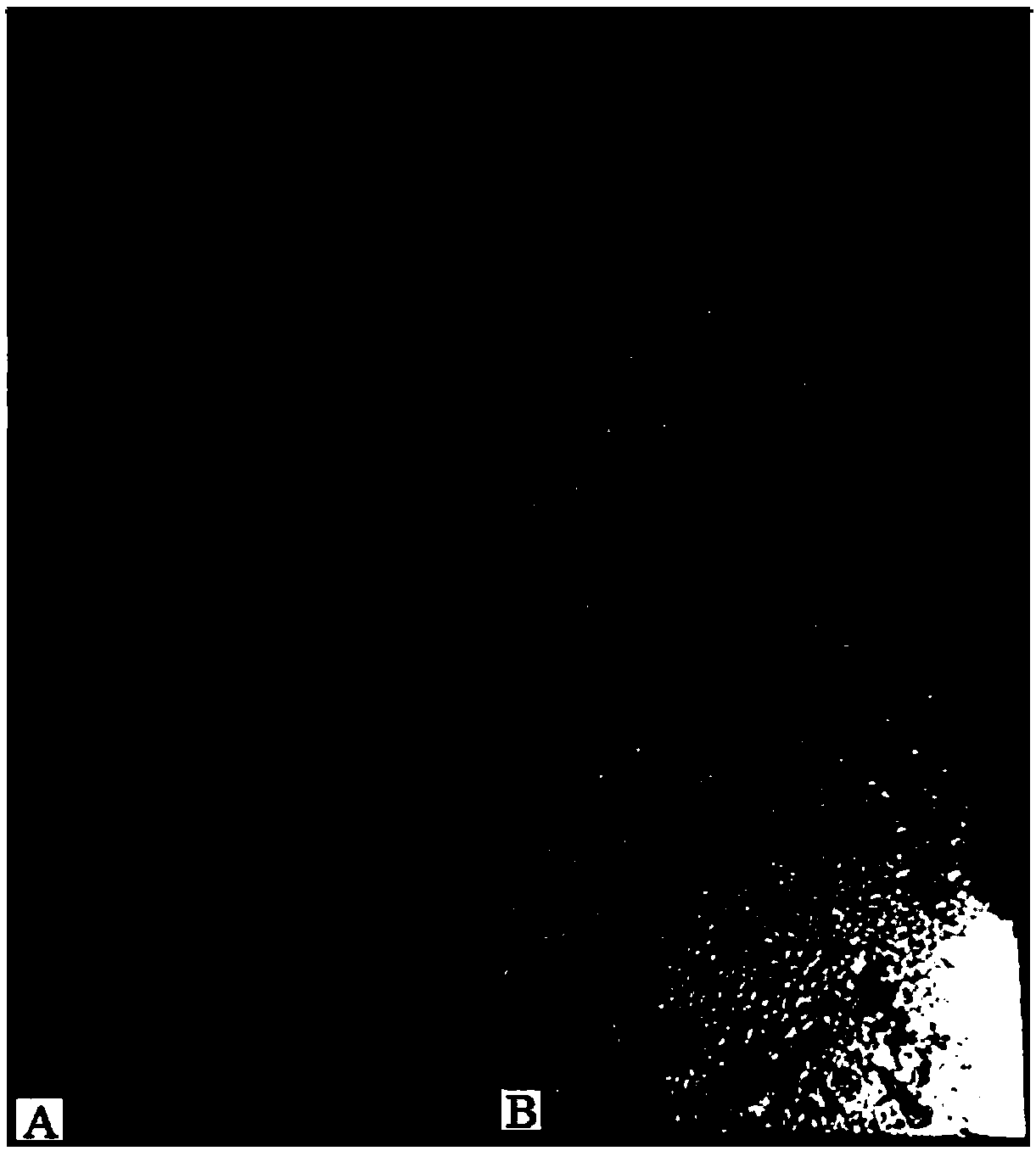Solvent-resistant acrylic emulsion and preparation method thereof
An acrylic emulsion and solvent-resistant technology, applied in the field of solvent-resistant acrylic emulsion and its preparation, can solve the problems of difficult solvent resistance of water-based acrylic emulsion, increase the distance between polymer segments, reduce the entanglement of segments, etc. Scrub resistance and solvent resistance, improve solvent resistance, and improve the effect of product cost performance
- Summary
- Abstract
- Description
- Claims
- Application Information
AI Technical Summary
Problems solved by technology
Method used
Image
Examples
preparation example Construction
[0031] In addition, the present invention also provides a method for preparing the solvent-resistant acrylic emulsion, which specifically includes the following steps:
[0032] 1) Pre-emulsification: under normal temperature and pressure, mix the anionic emulsifier and 30-40 parts of water in the pre-emulsification tank, fully stir and dissolve, and then add the styrene, butyl acrylate and acrylic acid in the formula to obtain pre-emulsion;
[0033] 2) Polymerization: add 120-170 parts of water to the bottom of the reaction kettle, heat up to 80-90°C, stir for 20-40 minutes, take 5%-10% of the pre-emulsion obtained in step 1) as the seed emulsion, and put it in at one time At the bottom of the reaction kettle, take 0.1-0.2 parts of the initiator, put it into the bottom of the kettle at one time, react and keep it warm for 10-30 minutes, after the seed emulsion is formed, add the pre-emulsion obtained in the remaining step 1) and 0.05-0.6 parts Initiator, the dropping time is ...
Embodiment 1
[0038] A solvent-resistant acrylic emulsion, comprising the following components in parts by mass: 180 parts of water, 50 parts of styrene, 40 parts of butyl acrylate, 0.5 parts of acrylic acid, 1 part of anionic emulsifier, 1 part of functional monomer, and initiator 0.2 parts, 0.1 parts of oxidizing agent, and 0.1 parts of reducing agent.
[0039] The anionic emulsifier is sodium lauryl sulfate.
[0040] The functional monomer is vinyltrimethoxysilane.
[0041] The initiator is sodium persulfate.
[0042] The oxidizing agent adopts organic peroxide.
[0043] The reducing agent is sodium binitrite.
[0044] In addition, the present invention also provides a method for preparing the solvent-resistant acrylic emulsion, which specifically includes the following steps:
[0045] 1) Pre-emulsification: Under normal temperature and pressure, mix the anionic emulsifier and 30 parts of water in the pre-emulsification tank, fully stir and dissolve, and add the styrene, butyl acryla...
Embodiment 2
[0055] A solvent-resistant acrylic emulsion, comprising the following components in parts by mass: 220 parts of water, 55 parts of styrene, 45 parts of butyl acrylate, 3 parts of acrylic acid, 3 parts of anionic emulsifier, 3 parts of functional monomer, initiator 0.6 parts, 0.3 parts of oxidizing agent, and 0.3 parts of reducing agent.
[0056] The anionic emulsifier is sodium dodecylbenzenesulfonate.
[0057] The functional monomer is methacryloxytrimethoxysilane.
[0058] The initiator is ammonium persulfate.
[0059] The oxidizing agent adopts organic peroxide.
[0060] The reducing agent is vitamin C.
[0061] In addition, the present invention also provides a method for preparing the solvent-resistant acrylic emulsion, which specifically includes the following steps:
[0062] 1) Pre-emulsification: Under normal temperature and pressure, mix the anionic emulsifier and 35 parts of water in the pre-emulsification tank, fully stir and dissolve, and add the styrene, butyl...
PUM
| Property | Measurement | Unit |
|---|---|---|
| particle diameter | aaaaa | aaaaa |
Abstract
Description
Claims
Application Information
 Login to View More
Login to View More - R&D
- Intellectual Property
- Life Sciences
- Materials
- Tech Scout
- Unparalleled Data Quality
- Higher Quality Content
- 60% Fewer Hallucinations
Browse by: Latest US Patents, China's latest patents, Technical Efficacy Thesaurus, Application Domain, Technology Topic, Popular Technical Reports.
© 2025 PatSnap. All rights reserved.Legal|Privacy policy|Modern Slavery Act Transparency Statement|Sitemap|About US| Contact US: help@patsnap.com

